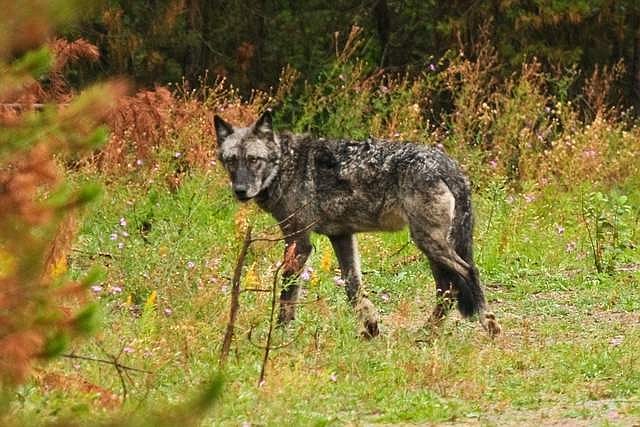Wolf count in Region 2 is up, but mostly stable
Following Montana Fish, Wildlife and Parks 2017 Annual Report release this spring, officials estimate 633 gray wolves reside in Montana, more than the previous five years.
“Here in Region 2, they’re stable,” said Tyler Parks, an FWP Region 2 Wolf Management Specialist. “Our high was between 2011 and 2013 if you look at minimum counts and harvest.”
While the wolf population is higher than it has been in the last few years, Parks said the wolf population is not at its highest.
“If you were gonna look at the highest, it’s in April when they have pups,” he said. “Populations will start to decline.”
Parks says it’s difficult to say what causes the wolf population numbers to increase or decline.
“It’s the same with any predator,” he said. “There’s so many variables, we all play a part.”
FWP officials use a monitoring system called “Patch Occupancy Modeling” (POM). This method combines annual hunter effort surveys, known wolf locations, habitat variables and wolf territory size and packs to estimate wolf distribution and population across Montana, according to the report.
It’s currently the most effective and least expensive method and remains the preferred way to count them. FWP is working with the University of Montana to refine POM by incorporating data and improved collar technology.
POM estimates wolf distribution and numbers by estimating wolf pack occupation area, estimating the numbers of wolf packs by dividing area by territory size and multiplying estimated pack numbers by average annual pack size and lone wolves.
Parks says they still use radio collars along with POM.
“Radio collars have been important throughout the year, especially recolonizing and trying to count every pack,” Parks said. “But it costs a lot of money and it’s not efficient.”
Parks says according to the POM estimate the populations bounce up and down every year.
Wolf hunting is current tool used for conservation and is used as a management tool. In 2017, there were two hunting and trapping seasons where 65 wolves were harvested in the spring and 168 in the fall. Wolf hunting licenses generated $380,261.
Hunters helped significantly with population estimations and between 2007 and 2016, between 50,000 and 82,000 hunters responded annually to wolf sighting surveys.
Montana is above the minimum, which is 150 wolves and 15 breeding pair minimums of the state plan.
While wolf populations are remaining stable, FWP is receiving fewer livestock interaction complaints. Complaints have declined where they dropped from 233 in 2009 to fewer than 100 from 2014 to 2017. This is because in 2009, federal and state regulations have allowed private citizens to kill wolves if they threaten livestock. In 2017, wolves killed 49 cattle, 12 sheep, one dog and 18 goats.
According to FWP, wolf recovery began in the early 1980s. They reached biological recovery in 2002 after the wolf recovery goal of 30 breeding pairs and three consecutive years in Montana, Idaho and Wyoming.
Successful reintroduction in Yellowstone National Park, wilderness areas in central Idaho and natural emigration from Canada also contributed to their recovery. In 2002, there was a minimum of 633 wolves and 43 breeding pairs in the Northern Rocky Mountains.
In May 2011, FWP reclassified wolves as a species in need of management in Montana and state laws began to replace federal framework.
After intense monitoring and recovery in the past 30 years, wolf populations levels have been above requirements for more than a decade.



